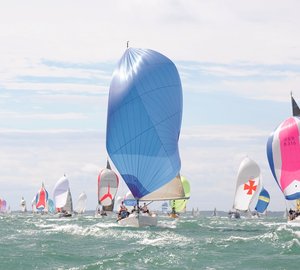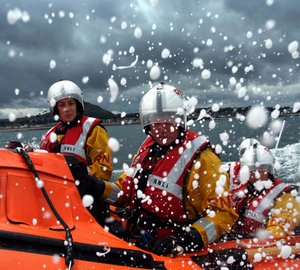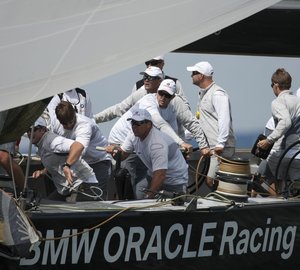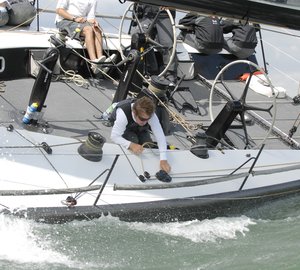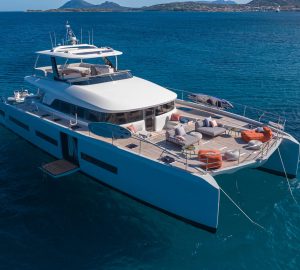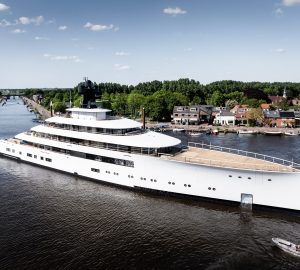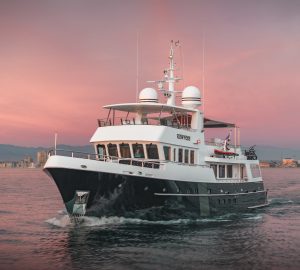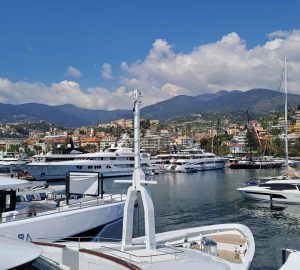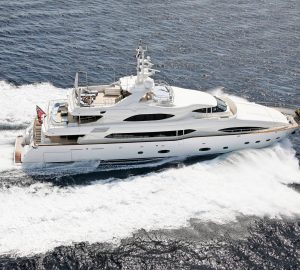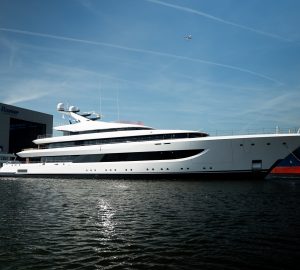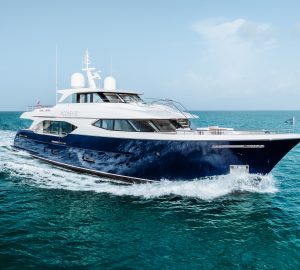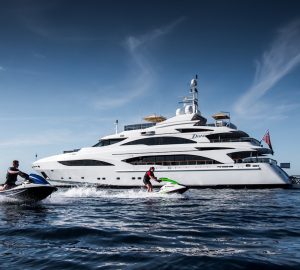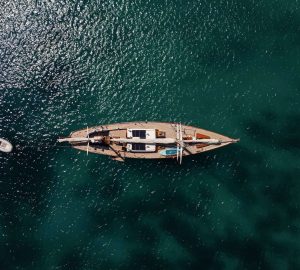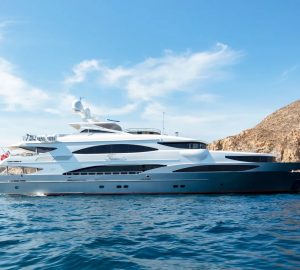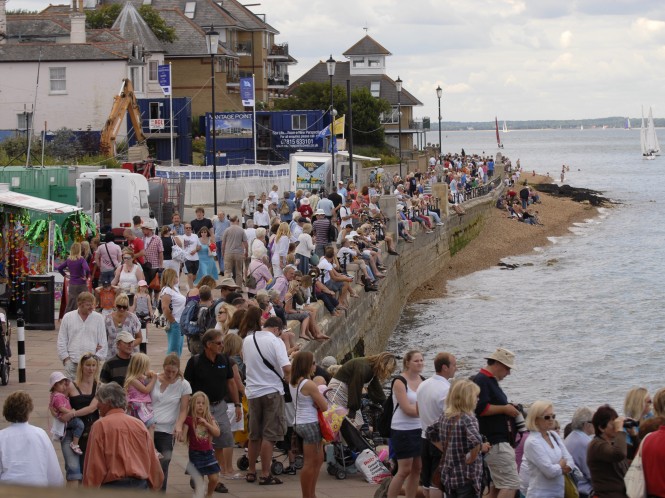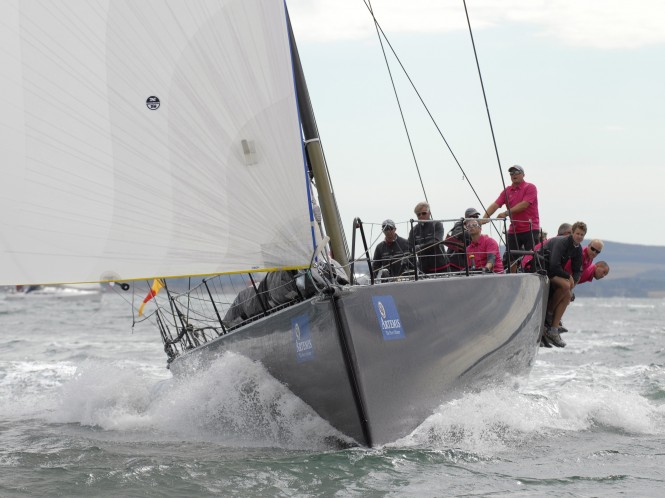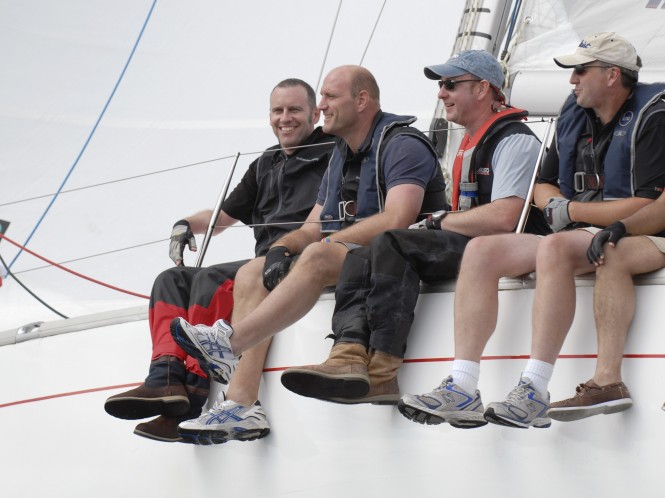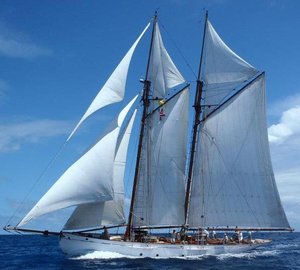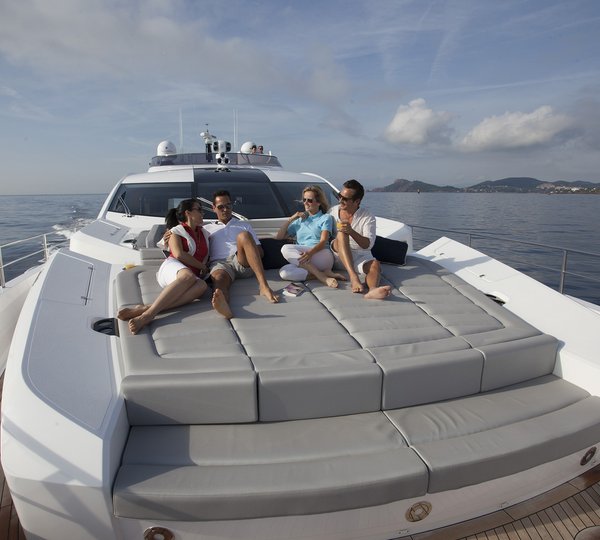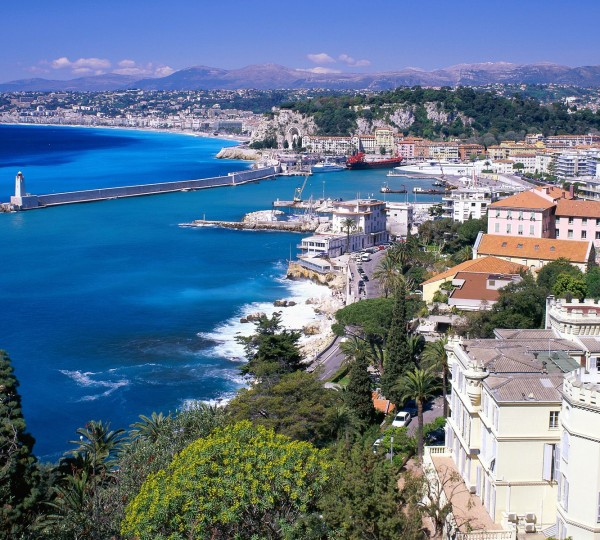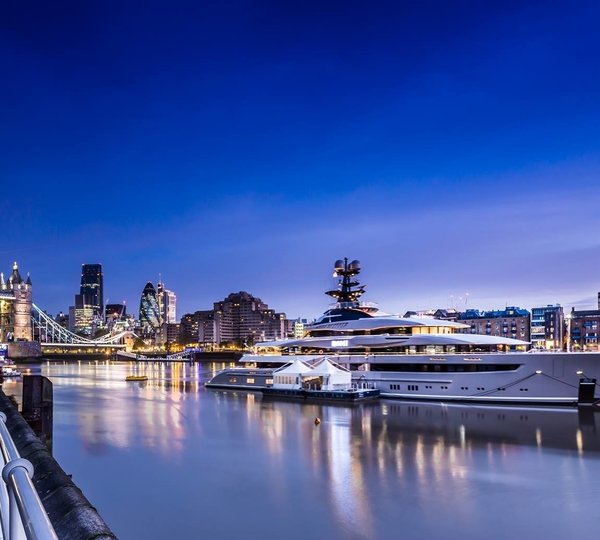Below is the summary of the third day at Cowes Week 2010. The start of the day three was marked by sunny day forecast, however by mid-day the conditions changed and the second AP flag came down, signalling the end of the indefinite postponement.
The west-south-westerly winds of the first two days of Cowes Week gave way to a light northerly gradient wind overnight. With the thin layer of cloud forecast to clear, the prospects were for a mostly sunny day. However, this in turn gave race officials and course setters an unenviable dilemma – rising temperatures were forecast to give a south-westerly afternoon sea breeze, with the inevitable shut-down mid Solent first.
By 1015 the cloud was breaking up and the sun warming Cowes. Although Bramblemet was still showing a consistent northerly, this was affected by the accelerated air flow out of Southampton Water and therefore not a reliable indication of the wind elsewhere. An hour later big holes were appearing in the northerly airflow, and at mid-day, although the sea breeze had not reached the central Solent, the second AP flag came down, indicating the end of the indefinite postponement.
A promising startThe first start on the Squadron line at 1330 was for the Laser SB3 class. With the tide starting to ebb at the inshore end of the line, and the fleet heading eastwards, the outer end of the line was favoured. With one minute to go, the boats closest to the line were heading away in a cautious start, with the fleet unwilling to risk being swept downwind and downtide of the line.
Andrew Vernon’s Epitomy was first away, followed by Jeremy Waitt’s crew from the Royal Hospital School on Pelican Racing 8, and Colin Simonds’ Doolalli. The wind increased for the start, and with spinnakers hoisted the fleet quickly cleared the line.
Both Black and White Group classes adopted a five minute starting sequence, so IRC Class Zero started at the same time as the SB3s, but were heading west, all with Code Zero sails set. Sir Peter Ogden’s Mini Maxi Jethou, the largest boat at the regatta, pulled out a clear lead immediately after the start. In her wake three 52-footers – the TP52s Pace and Rio, and Sam Laidlaw’s Farr 52 Bob were neck-and-neck alongside each other. Rio, owned by Charles Dunstone, was to leeward, but managed to sail through the lee of her rivals a few minutes into the race.
Jethou continued to extend her lead, taking line honours a clear 10 minutes ahead of Johnny Vincent’s Pace, and winning on corrected time. Bob finished fourth on the water, but beat Rio into third place on handicap by a comfortable 12 minutes.
Five minutes after the SB3 and Class Zero starts the wind was still holding up for the Longtze class, with Swiss sailor Jarmo Wieland’s Shensu pulling well ahead of her rivals, and holding the lead at the finish. On coming ashore, German competitor Eckhard Kaller, who finished second today after first places at the weekend, said: “We had a very bad start and there was little upwind work so there were no opportunities to pass or make places on other boats. We have four crew, three from Germany and one from France. Generally it’s an easy and fun boat to sail – very quick in light air and very fast in heavy air. As for Cowes Week, well, it was always a wish to come here so we are very happy and we’ll definitely be back.”
In IRC 1 veteran Dutch racer Piet Vroon’s Tonnerre de Breskens had a cracking start, quickly pulling 5-6 lengths ahead of the rest of the fleet. The two 12-Metres, however, quickly caught up with the Dutch boat, with Richard Matthews’ Crusader to leeward of Richard Rankin’s Italia. As they moved into the shallow water on the north shore the 12-Metres bore away towards the first mark, Salt Mead, hoisting their (symmetric) spinnakers, while Tonnere peeled to a larger asymmetric spinnaker.
David Frank’s J/125 Strait Dealer took a different strategy to many others in the fleet. They recovered from an indifferent start, sailing lower, faster and a shorter distance towards the mark off the Island shore. Initially this looked like a winning move, but they fell into a hole of very light wind off the Island shore, while the wind held up further north.
Lighter windsThe Dragons started at 1355 in a very light breeze. Julia Bailey’s Aimee was again ahead at the start and was first to get her spinnaker drawing. In contrast to the previous two days of racing, when starts to the west against the tide resulted in the fleets mingling in tight bunches and plenty of boat-on-boat action when short tacking, today the fleets quickly became stretched out across the course. Just 10 minutes after their start, for instance, the 18 J/80s were spread over a distance of half a mile. Ahead of them the Etchells were struggling to make progress towards West Ryde Middle, their first mark, with the front-runners carefully watching their drift angles as the tide carried them ever-faster to the east.
With the wind reducing further, Black Group starts on the RYS line were again postponed after the Sigma 38 start at 1350 and White Group race officials were forced to follow suit just before the RS Elite start at 1405. By now, spinnakers had collapsed on the north shore, but a light and fitful south-westerly could be seen moving up the western Solent.
Half an hour later, as the tide started to ebb over the whole of the White Group start, the new wind was becoming consistent off the Squadron, and the AP was ordered down at 1434. However, a large tanker bound for the Fawley Oil Terminal in Southampton Water forced a continuation of the Black Group postponement.
The RS Elites got away in a good south-westerly sea breeze that was now extending well into the eastern Solent, with a promising 10-13 knots at the Bramble. However, this had still not reliably set in – when the Sunbeams started at 1450 the wind was easing again, and there were signs of the northerly gradient breeze returning in the western Solent.
Five minutes later the wind was even lighter – the first Redwing, Nick Holland and Sophie-Jo Walker’s Kestral, did not cross the line until almost one minute after the start, while the back markers failed to clear the line when the Flying Fifteens and Swallows started five minutes later.
With insufficient wind to drive the remaining boats over the increasingly strong west-going tide, and time running out, the difficult decision was made to abandon the starts for the remaining classes – Squibs, Mermaids and Victorys – at 1510. At the same time the remaining Black Group boats, including Quarter Tonners and IRC Classes 5-7 were returning to harbour, their starts also having been abandoned.
The Wave stays aheadAfter day three of the Extreme Sailing Series at Cowes, The Wave, Muscat remains at the top of the leaderboard, having stretched her lead to 14 points. Oman Sail Masirah moved up to second place, with a lead of just one point over Groupe Edmond de Rothschild and Ecover Sailing Team, both of whom are tied on 112 points. Fifth-placed Red Bull Extreme Sailing is also in contention for a podium finish, with 106 points.

